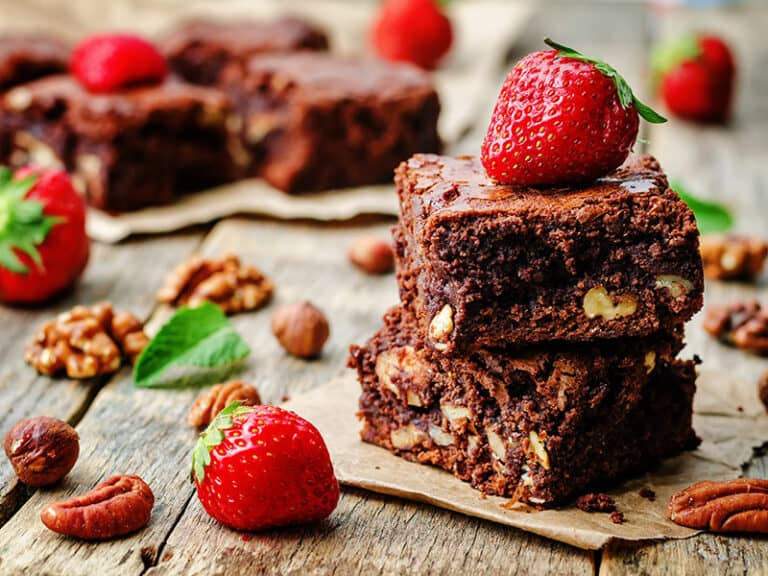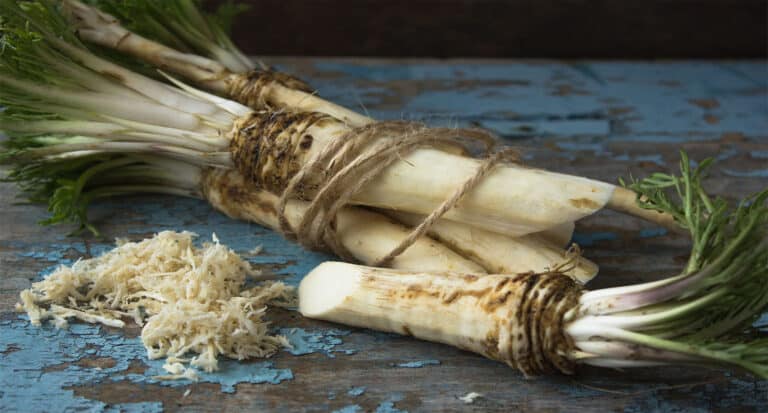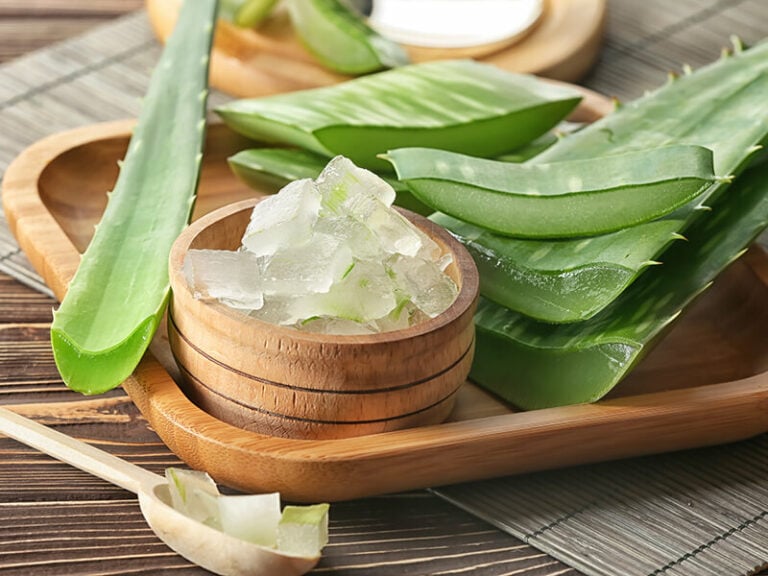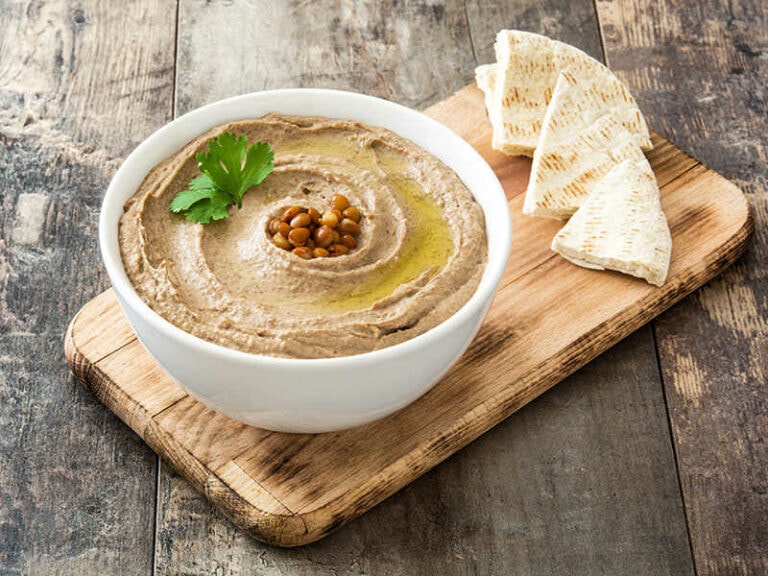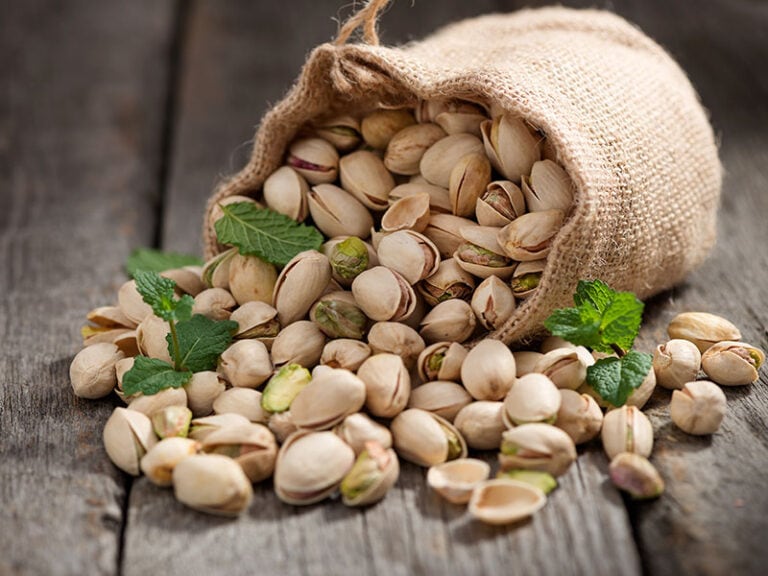Do you know how to store butternut squash? Butternut squash is a well-known fruit with an orange color and various nutrients like protein, carbohydrates, vitamin A and many more. Therefore, many people buy butternut squash for cooking.
However, when there are so many butternut squashes, and you don’t know the proper ways to store them, they easily get rotten or even moldy. So, how should you deal with butternut squash? This post will provide you with the best answer.

An Overview Of Butternut Squash
Butternut squash is greatly consumed because of the benefits it brings. But do you know its features?
Overall, here are some traits of butternut squash that I think you should know to gain a better understanding.
Characteristics
Butternut squash is a famous fruit in Australia and New Zealand, and they originate from Mexico and Guatemala. (1) Although botanically, it is a fruit, it is commonly used as a vegetable that can be processed in many ways.
Butternut squash has yellow or orange skin. Its sweet taste can be present in a variety of dishes from soups, salads, snacks, even desserts, and its taste is similar to pumpkin.
Attributes
The shelf life of butternut squash is very long compared to other vegetables, but for the best flavor, you should store them within 2 months after harvest. They are best stored at a temperature of 50 to 55 degrees Fahrenheit and air humidity of 60% to 70%. (2)
Benefits
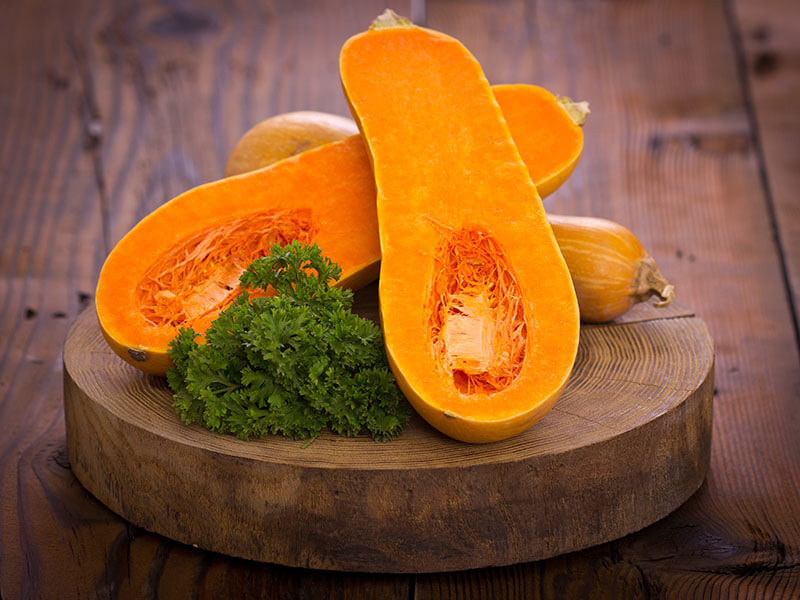
Butternut squash is a nutritious food. It contains many beneficial trace elements and vitamins. Eating butternut squash helps people strengthen immunity and reduce the risk of disease. Specifically, it contributes to brightening children’s eyes and helping women lose weight.
Quick Tips For Picking The Best Butter Squash
It is not easy to keep the butternut squash fresh for a long time and look beautiful. And the first step in the proper storage process for your squash is choosing the best ones. To do so, you need to pay attention to the following characteristics.
The Skin
Look at the skin of butternut squash. Observe around the skin. The skin must be intact, not waterlogged.
Besides, you should buy butternut squash with darker colors. If butternut squash is too pale, it is not ripe. Look for butternut squash with a darker orange color, and feel stiff when pressed.
The Stem
Examine the stem. Delicious butternut squash often has a fresh stem. The length of the stalk is about 1 inch. There is a little pus on the surface of the slice at the stem because it has just been cut for sale.
If the butternut squash has no stalk, it has the effects of growth chemicals. So, you should choose the butternut squash with the stem because they usually have a longer shelf life.
The Weight
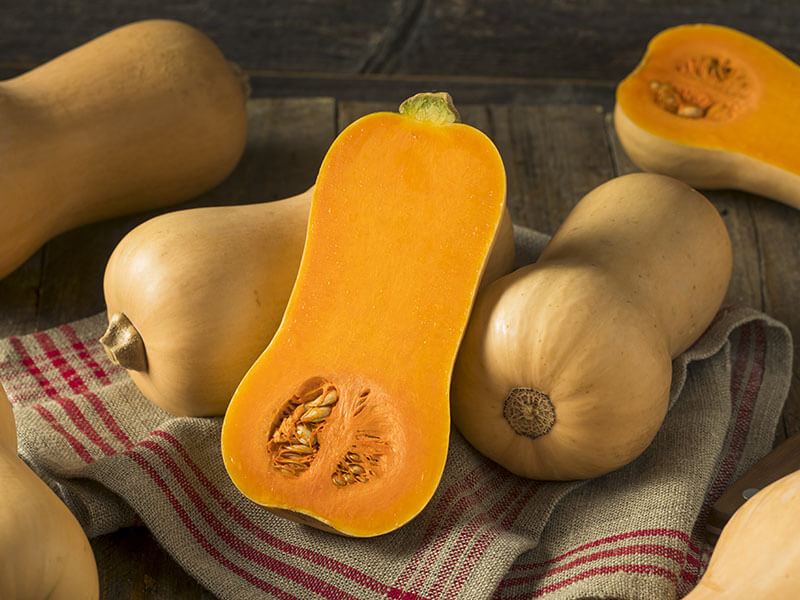
The weight of butternut squash can also indicate its freshness. When buying butternut squash, if you hold it and feel heavy in your hand, it is delicious. If it is too light, it is not ripe.
Must-Know Factors For Butternut Squash Storage
In general, when storing butternut squash, you should consider the following factors for best results:
- Sunlight: For long-term preservation, you must store butternut squash in a dry place, away from direct sunlight
- Temperature: Favorable temperature condition for storing butternut squash is in the range of 50 to 55 degrees Fahrenheit.
- Humidity: To store butternut squash, the air humidity should be between 60-70%.
- Contact surfaces: Avoid letting vegetables touch each other. Eliminatecontact between them.
Besides, the quality of butternut squash also greatly affects the storage of this vegetable. Therefore, you should choose the butternut squash according to the criteria that I mentioned above.
Store Small Quantity Of Butternut Squash
When going to the market or supermarket, you often come across many big butternut squashes. People often cut them into pieces, wrap food wrap for retail. However, such butternut squash pieces are certainly not as fresh as butternut squash in their original state.
The butternut squash that has been will become moldy quickly. Therefore, I will tell you very simple but effective ways to store it, which can keep for a few months without spoiling.
Option 1: Store By Cooking
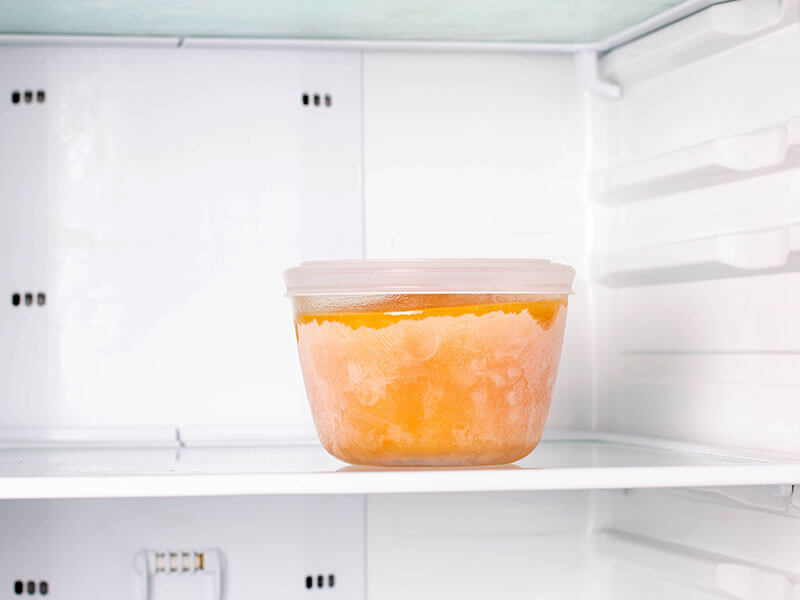
Storing food by cooking is no longer a strange method for many people. However, for butternut squash, this method is most effective only when you follow the steps below:
Stage 1: Preparing
Make sure you have butternut squash, a suitable variety of blenders, and some food containers with lids.
Stage 2: Cooking
There are 3 steps for this stage.
Step 1: Washing And Cutting
Wash the outer skin, peel the butternut squash, remove the seeds and cut into bite-sized pieces (about 2 inches).
Step 2: Steaming Or Baking The Butternut Squash
You bring the butternut squash to steam or bake. Then, remove the intestine, remove the outer shell.
Step 3: Pureeing
You use a blender to puree the butternut squash and then let it cool completely. If you want the pureed butternut squash to cool faster, you can put them in a glass or porcelain bowl and put this bowl in a bowl of cold water.
Stage 3: Storing
After the butternut squash has cooled, place the butternut squash in food containers with lids. Finally, put them in the freezer and store them.
Notes:
- Do not fill the box, but leave a space of 2-3cm because when put in the refrigerator, the butternut squash can expand
- I encourage you to use glass containers instead of plastic ones to ensure your health safety
- When storing cooked butternut squash in the freezer, you must put it in food containers with lids or zip bags, away from foods with strong odors.
- When defrosting the butternut squash, you should put it in the refrigerator to thaw slowly. Absolutely, do not rinse under the tap because they can convert substances into food.
With this preservation method, you can safely use the butternut squash gradually within 4-6 months without worrying about the quality of the butternut squash.
If you do not understand how to puree butternut squash, don’t worry. I will help you. Refer to the following video for a better understanding!
Option 2: Store Fresh Butternut Squash With The Refrigerator Or Freezer
The refrigerator is the best place to store vegetables at home. It will help to store the vegetables longer, where the vegetables will retain their precious properties and freshness of taste. For fresh, uncooked butternut squash, you can store it in the refrigerator like any other vegetable.
Using The Refrigerator
To preserve fresh butternut squash in this way, you should take the following procedure:
Step 1: Clean Butternut Squash
After buying butternut squash, you wash the skin, peel the butternut squash, cut them into bite-sized pieces, and drain well.
Step 2: Use Bags To Put Butternut Squash In
Put the butternut squash in bags (can be vacuumed) or cover with food wrap.
Step 3: Store Butternut Squash In The Refrigerator
If you want to eat it soon, you can refrigerate it at a temperature of 5 to 8 degrees Celsius, use gradually over 3 – 5 days.
Using The Freezer
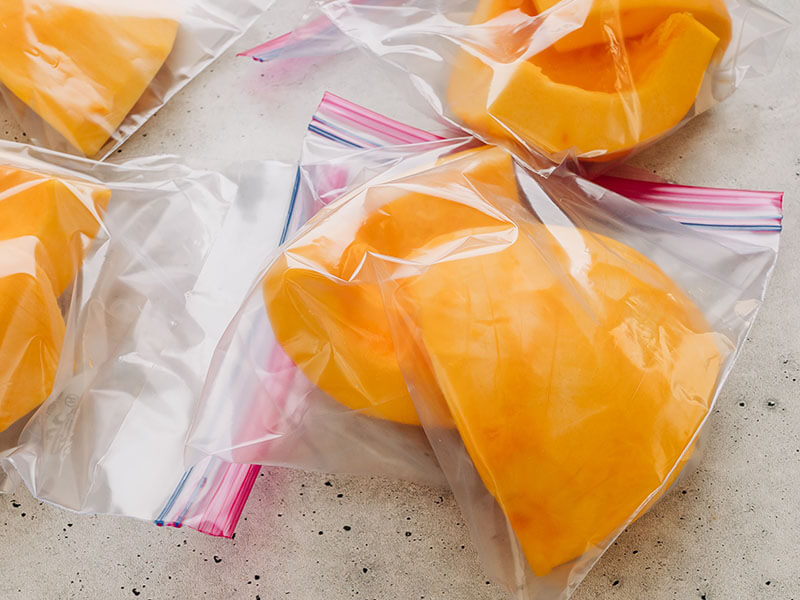
Besides using the refrigerator to store butternut squash, you can also use the freezer for general storage.
You clean squash and put squash the butternut squash in bags in the same way as when storing squash in the refrigerator.
Then, you can store it in the freezer at a temperature of – 8 to – 10 degrees Celsius. This way will keep the freshness of butternut squash for 2 to 3 months.
Don’t skip this guide. It will show you exactly how to cut butternut squash and pack them.
Store Whole Butternut Squash
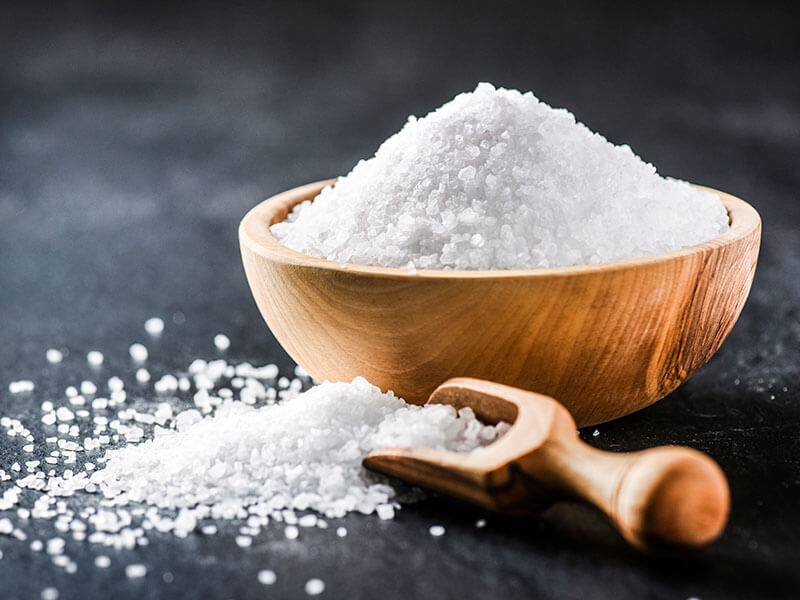
If you want to keep the butternut squash longer, you can preserve the whole squash.
To do this, you carry out the following method:
- You use a spoon or knife to scrape the intestines, remove the seeds.
- Rub a little salt on the butternut squash slices.
- Use food wrap to cover the butternut squash and store it in the refrigerator.
This way can help you store butternut squash for 1 month and still keep the freshness of butternut squash.
Note: You should not sprinkle inside the butternut squash with salt. Salt has a disinfecting effect, preventing bacteria from entering, so it will well protect the slice of the butternut squash, preventing it from being quickly rotten or damaged.
How About Storing Big Quantity Of Butternut Squash
For farmers who grow squash in large quantities, they certainly cannot preserve it by cooking method or keeping it in the refrigerator.
So some other preservation methods are mentioned below.
Option 1: Store Butternut Squash In The Basement
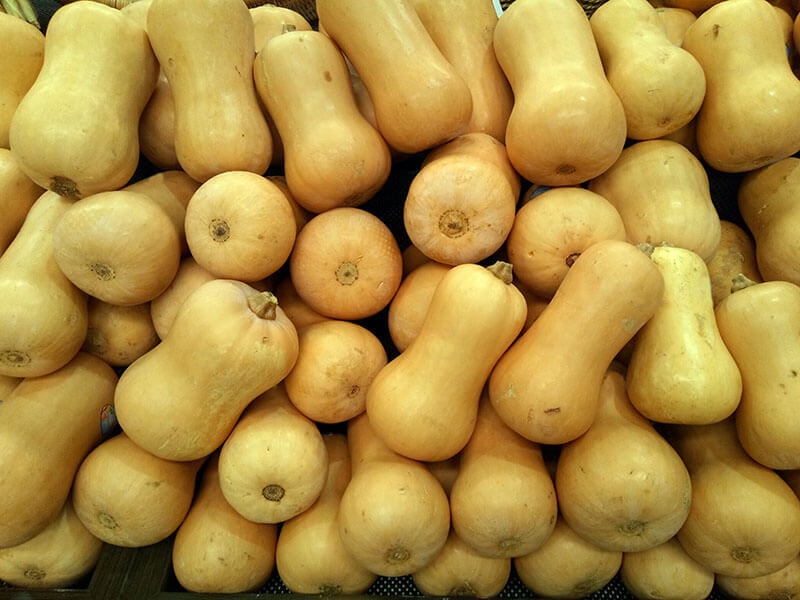
To store butternut squash in the basement, the basement must meet the following conditions: dry, well ventilated, and have a temperature between 2 and 10 degrees Celsius.
To get the best results from storing butternut squash in the basement, follow these steps:
Step 1: Clean The Basement
You have to clean the room and disinfect it.
Ensure a constant air temperature is maintained at 2 to 10 degrees Celsius
Step 2: Prepare Shelves
You need to prepare wooden shelves or shelves in the basement to put the butternut squash on the shelves.
Step 3: Put The Butternut Squash On The Shelves
You can cover the shelf with straw, sawdust, or pine needles, then arrange the pods in a row, the stalks facing up and away from each other.
Usually, under such conditions, this vegetable is stored in the cellar for about 6 months.
Notes:
- If you do not have a wooden shelf or shelf, you can hang butternut squash in a grid from the ceiling
- You can place butternut squash for storage next to other vegetables. You should cut or wash it before storing it.
- You must constantly check the state of the butternut. For this, once a month, the butternut squash is inspected, removed for spoilage so that they do not infect healthy vegetables.
Option 2: Store Butternut Squash On The Glazed Balcony
Unfortunately, not everyone can afford to store butternut squash in the basement. Especially people who live in an apartment. However, with proper preparation, you can also store butternut squash for a long time in apartment conditions.
In an apartment, a glazed balcony is very suitable for butternut squash preservation.
Step 1: Prepare A Glazed Balcony
To keep butternut squash on the balcony, you just need to choose a room that is glazed and insulated. The temperature should remain between 2 and 15 degrees Celsius and the humidity should not exceed 70%.
Step 2: Place The Butternut Squash On The Shelves
You place the butternut squash on a wooden rack. After thick paper or thick cloth is lined on top, it is arranged in layers with the stem on top. Remember to leave a space between them so that they do not touch each other.
Step 3: Do Not Expose The Butternut Squash To Sunlight
You cover the butternut squash with a cloth from above to avoid sunlight.
Step 4: Do Not Let The Butternut Squash Freeze In The Winter
Just like the storage method for spaghetti squash, cover your butternut squash in a blanket when winter comes. That’ll prevent the squash from freezing. If there is not enough space on the balcony or too many butternut squashes, separate them with cardboard or thick paper.
Under such conditions, you will preserve the butternut squash for a long time and will not lose its wonderful taste.
Notes:
- When storing, it is necessary to make sure that the butternut squash does not touch each other; otherwise, damage and rot may appear on them.
- You cannot stack a butternut squash in direct sunlight. This is necessary to exclude any infiltration of moisture.
Option 3: Store Butternut Squash By Drying Method

Another way to preserve butternut squash is to dry it. As a result, you will get sweet squash chunks, similar to dried fruit. This method of storage also saves most of the vitamins of this squash.
To store butternut squash by this method, you need to follow the procedure below:
Step 1: Prepare And Clean Butternut Squash
As in the previous methods, you clean it, wash and chop the butternut squash, peel and remove seeds, and cut it into small slices.
Step 2: Boil And Refrigerate The Butternut Squash
Place butternut squash slices for 30 seconds in boiling water to soften the butternut squash a bit and make it even tastier. Then, immediately transfer them to ice.
Step 3: Dry The Butternut Squash
You put it on the colander, drain and let it dry.
Step 4: Grill The Butternut Squash
Put the squash on the baking sheet, put it in the preheated oven at about 50 – 60 degrees Celsius for 5 to 6 hours.
Step 5: Put The Butternut Squash In Bags And Store It
When the butternut squash slices are completely dry, you can remove them from the oven. Put it in containers or bags and store it in a dark and dry place.
Dried butternut squash can be stored for about three months in a dark, cool, and well-ventilated place.
Notes:
- The flame in the oven should always be minimal, no more than 150 degrees. Drying at a relatively low temperature allows many vitamins in the butternut squash to be preserved.
- Regularly look in the containers or bags with the butternut squash to prevent insects from entering it.
Option 4: Store Butternut Squash By Salting Method
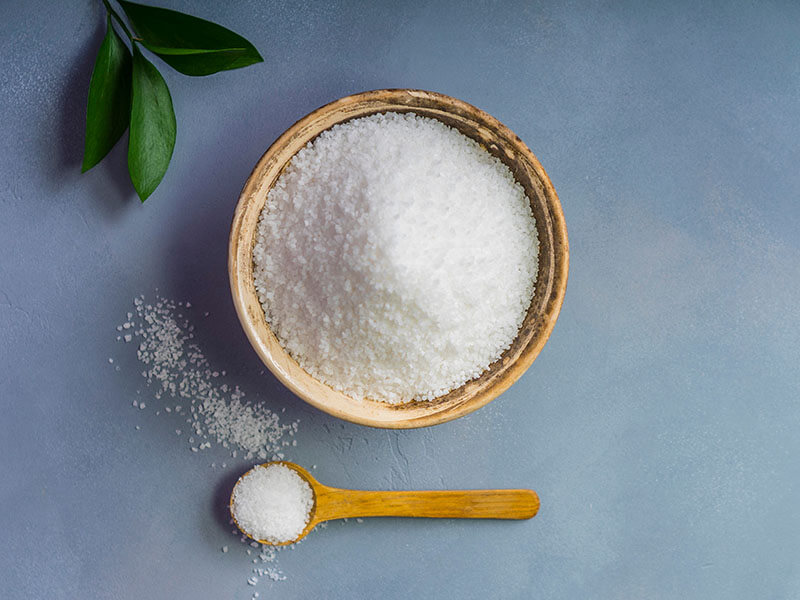
Salt has high antibacterial properties and becomes an ingredient to help preserve food for a long time. Specifically, with meat, fish, and some vegetables, if marinated with salt with a concentration of over 10%, it will inhibit the growth of microorganisms that cause food rancidity.
And to store butternut squash by salting method, you follow the following procedure:
Step 1: Clean Butternut Squash
Wash the butternut squash to remove dirt, peel, and remove the seeds. Next, cut butternut squash into pieces.
Step 2: Put The Butternut Squash In Containers And Add Salt
Put the butternut squash in a clean sterilized container. Spread a layer of salt over a layer of butternut squash, do the same to the end of the butternut squash. Note that you should put a layer of salt on top.
Step 3: Place The Containers In A Dark Place
Cover the container with a lid or cover with a cloth to prevent insects from entering, and place it in a dark place.
This method is both popular and more effective than using chemicals and freezing. However, if you use too much salt, it will make butternut squash salty. Overeating will not be good for your health.
In addition, before using salted butternut squash, you should also soak it in water and wash it many times to reduce the salinity!
How To Tell If Butternut Squash Is Bad?
During storage, you do not know if the butternut squash is spoiled or not until you open it up. But when checking, there are a few things that you should look for.
Here are some characteristics of the bad butternut squash:
- Soft spots on the skin: If your butternut squash has these spots, this means it is rotten.
- The smell: The butternut squash will have a baked odor when it begins going bad. This smell is similar to over-ripe apples or a moist.
- The color: You can look for dark or white patches on the rind. These are signs that the squash has spoiled.
- The weight: Hold the butternut squash and feel it. If it is heavy, it is good. If it is light or seems empty inside, it will not be any good.
- The flesh: Cut a small section of the butternut squash, open it, and look at its interior. This is the best thing to do. If there are any dark spots on the flesh, get rid of it.
Bad butternut squash is not good for your health. So, how do you know they have started to spoil?
What Are The Differences Between Methods?
This section will give you a better overview of butternut squash preservation methods so that you can choose the right storage method for your family.
What Is The Best Method To Store Butternut Squash?
There are different preservation methods for different uses of butternut squash. Therefore, it is not possible to determine which method is the best.
However, using the refrigerator, freezer compartment, salting, and drying method for peeled butternut squash is most appropriate. For unpeeled butternut squash, the best solution would be to store the whole butternut squash on the balcony or in the basement.
FAQs
Storing butternut squash can be quite complex, especially with people doing this for the first time. Therefore, the following section is some other short information about the butternut squash storage that you should know.
Storing Butternut Squash Is No Longer A Big Problem
Well, that is all you need to know about how to store butternut squash. From now on, if you want to eat butternut squash, you can save time going to the market if you store them at home.
Finally, if you think these ways of butternut squash storage are useful, please spread this information to everyone around so they can know how to store butternut squash properly. Overall, thanks for reading.

References
- Discovered. 2022. Butternut squash – Discovered.
- Squash, S., 2022. Storage of Butternut Squash.

